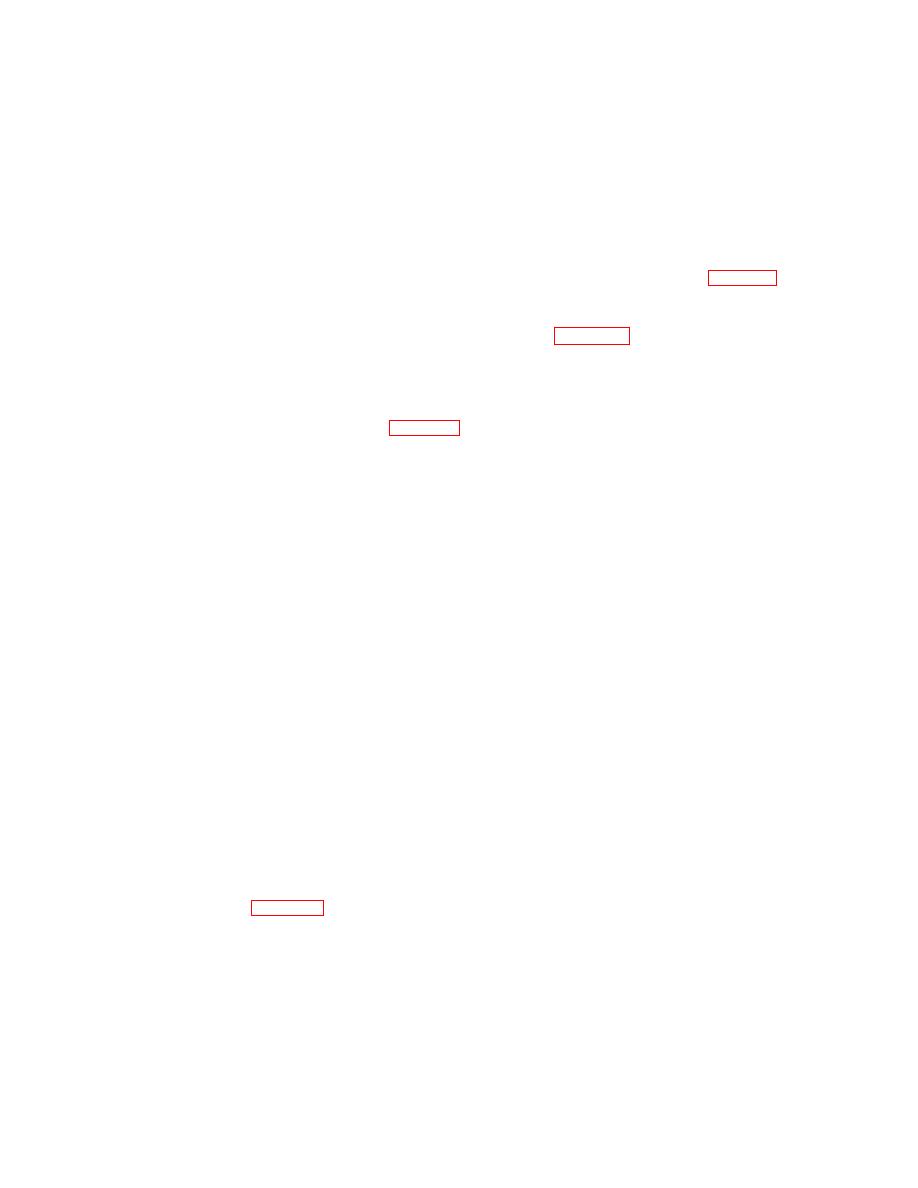
| Tweet |

Custom Search
|
|

|
||
 TB 55-1900-207-24
2-9. Sea Water Side Protection. The sea water side of the cooling systems is normally protected by zinc anodes
(plugs) or plates (slabs) which must conform to MIL-A-18001 (Anodes, Corrosion Preventative, Zinc, Slab, Disc, and Rod
Shaped). The anodes or plates should be inspected once a month and replaced when 50 percent eroded. The zinc
being a dissimilar metal is attacked by the electrolytic action and eroded.
SECTION II. PREVENTIVE MAINTENANCE
2-10. Testing and Inspection. During the scheduled maintenance services, or during climatic change service,
applicable testing of the system coolant and inspection of the cooling system, a. through d. below will be performed.
a. Test for antifreeze protection, when applicable, by use of a tester, antifreeze solution, see Table 1-1.
NOTE
A freeze protection indication beyond the limits shown in Table 2-1 or below -55 (-48 )
F
C
when MILA-46153 antifreeze is used, will require partial coolant drain and replacement with
water. Freeze protection must not exceed -55 (-48 ) when MILA-46153 is used.
F
C
b. Test for reserve alkalinity (corrosion protection) by means of the test kit, test strips and Color Chart, Antifreeze,
Freeze Point and Corrosion, A-A-51461. (See Table 1-1). Color indication of the test kit stick, after the test, will
determine condition of the coolant and its potential corrosion protection. Instructions for use of the test kit stick and color
interpretation are as follows:
(1) Dip stick into coolant (water or antifreeze solution) and remove immediately. Do not use test stick at
temperatures below +50 (+10 ).
F
C
(2) Fifteen seconds after dipping, compare color on the stick with the color chart on the container and
annotate.
(a) Blue indicates coolant is safe to use.
(b) Green indicates reserve alkalinity and corrosion protection of coolant is marginal but may be used
safely until the next service inspection.
NOTE
Do not use antifreeze extender additive (MILA-53009) when arctic type antifreeze is used in the
cooling system.
(c) Yellowish green indicates the coolant is unsafe to use. If the log (DD Form 314) identifies the
coolant as the original charge, then add three percent by volume (1 pint per 17 quarts) of the
antifreeze extender additive (MIL-A-53009) to the cooling system. Addition of extender (MIL-A-
53009) to antifreeze is a one-time service. When the extender is added to the antifreeze, the date
must be recorded in the "remarks" block of DD Form 314. If the log (DD Form 314) identifies the
unsafe coolant as having been extended before, or the coolant as arctic antifreeze, then the coolant
must be drained and replaced with fresh coolant.
c. Text Kit, Chromate, Table 1-1, will be used to test coolant for chromate concentration. For best results,
chromate concentration should be maintained at about 2000 parts per million (ppm). Concentrations below 1000 ppm
may lead to localized corrosion. Concentrations above 3000 ppm may cause accelerated cavitation on cylinder liners.
d. Visual inspection for coolant cleanliness is done by withdrawing a small amount of coolant into a clean container.
Visual examination will be made for excessive rust, foreign particles, and/or sediment.
2-4
|
||
 |
||